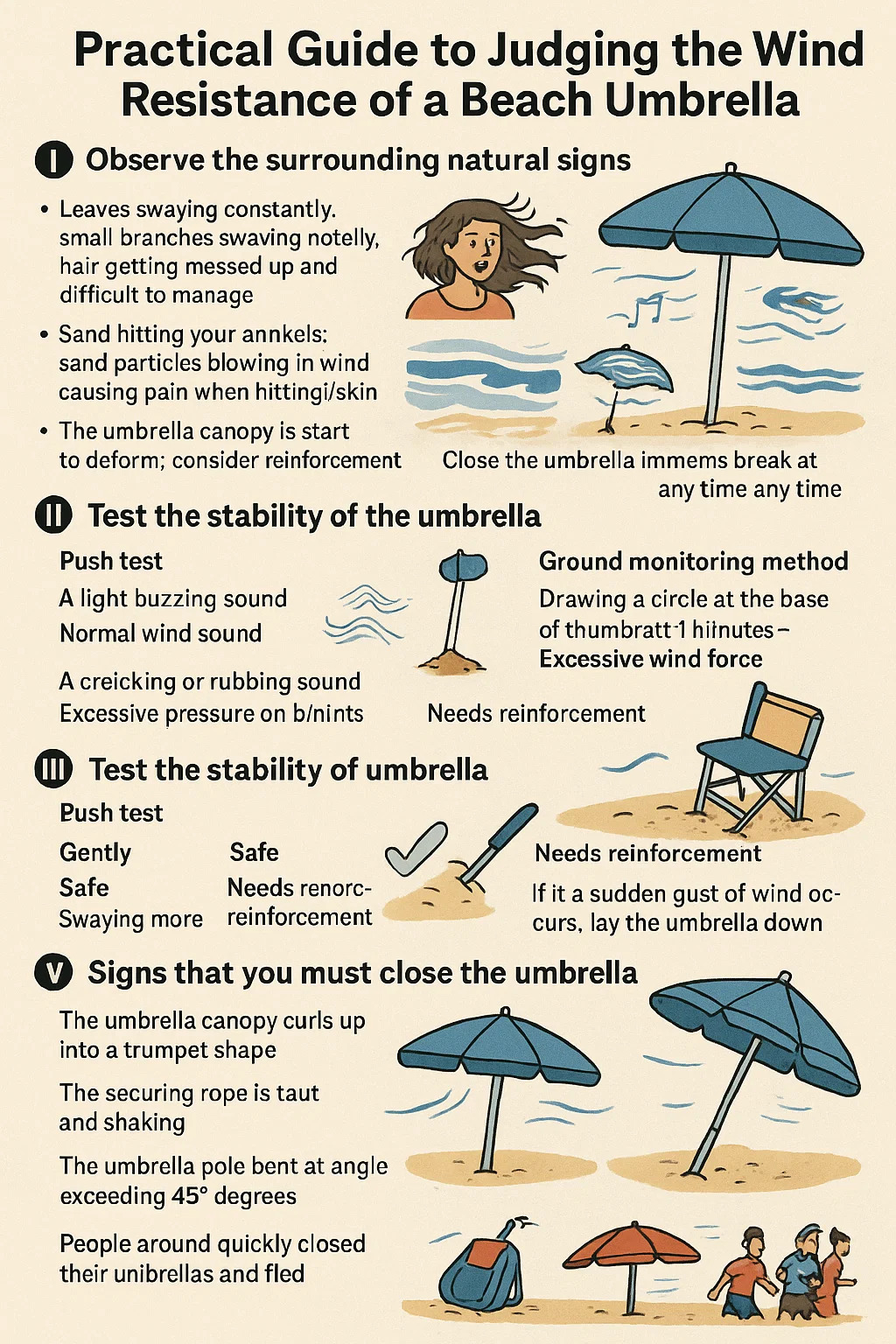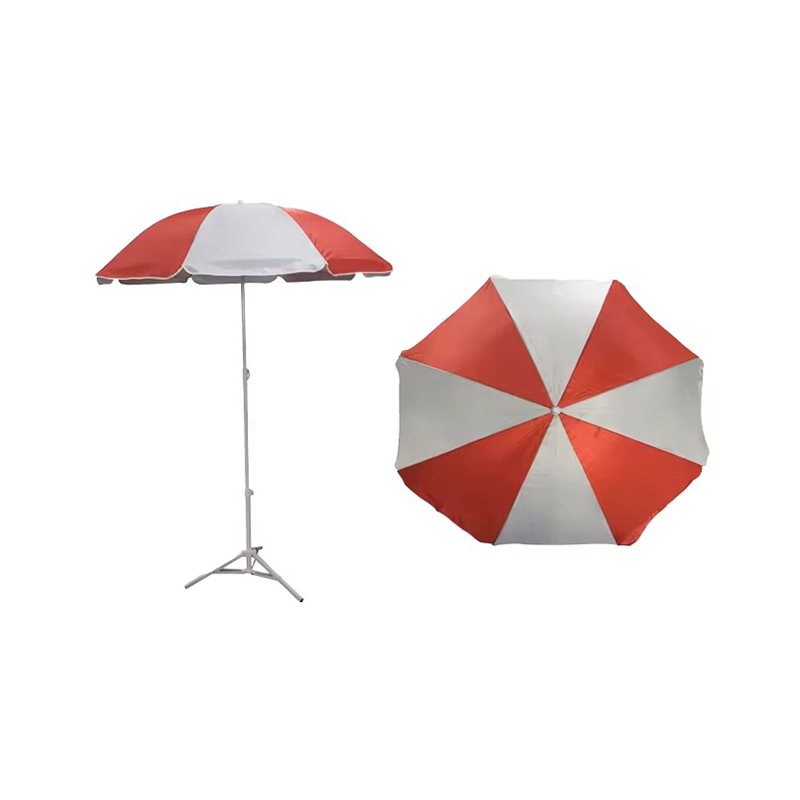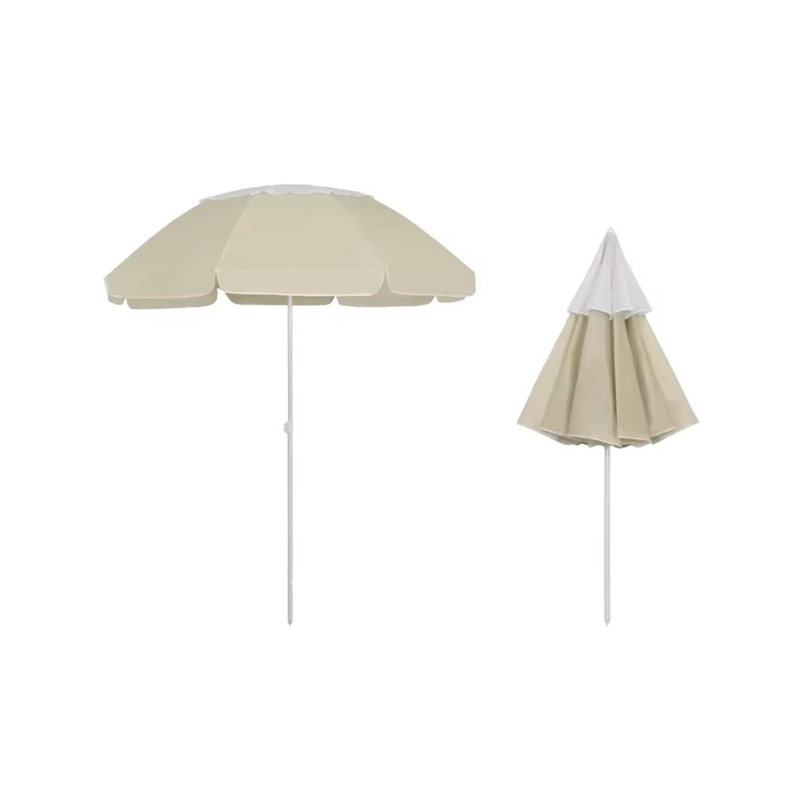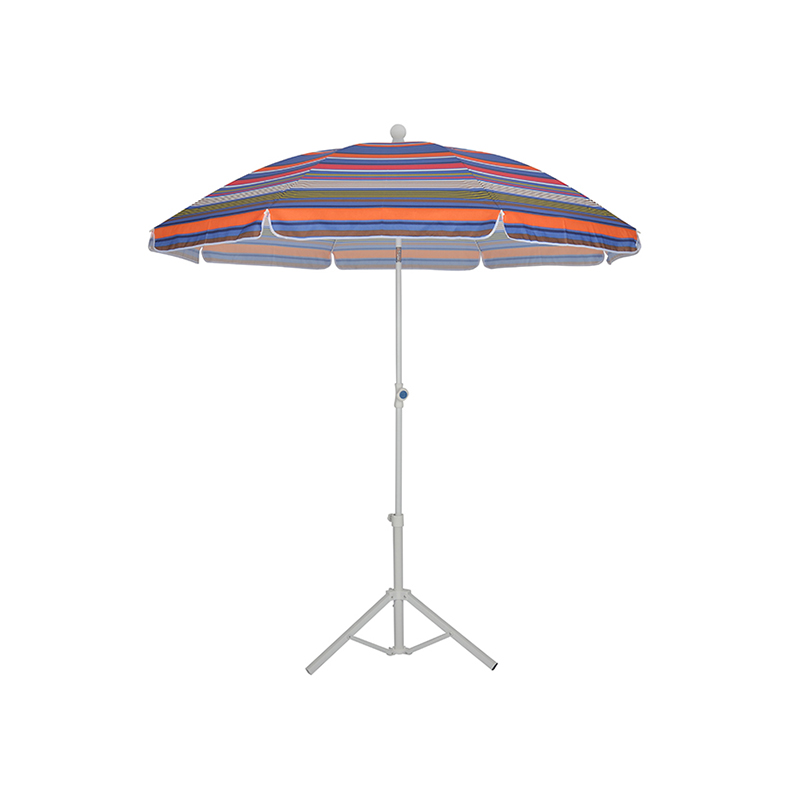How windy is too windy for a beach umbrella?
Posted by Admin
Here's a practical guide to judging the wind resistance of a beach umbrella:
Content
I. Observe the surrounding natural signs
• Leaves swaying constantly; small branches swaying noticeably, hair getting messed up and difficult to manage → The umbrella will shake slightly; check its fixation.
• Sand hitting your ankles; sand particles blowing in the wind causing pain when hitting your skin → The umbrella canopy is starting to deform; consider reinforcement.
• Waves turning into white foam; continuous white foam bands appearing at the crest of the waves → Close the umbrella immediately! Umbrella ribs may break at any time.
II. Listen to the sound of the umbrella
• A light buzzing sound: Normal wind sound; simply lower the angle of the umbrella canopy.
• A creaking or rubbing sound: Excessive pressure on the joints; reinforce the ground with ground stakes or sandbags.
• A crackling or tearing sound: The fabric is about to break; immediately close the umbrella to prevent it from tearing.
III. Test the stability of the umbrella
• Push test: Gently push the middle of the umbrella shaft with your palm:
A crisp rebound → Safe
Swaying more than 3 times → Needs reinforcement
• Ground monitoring method: Draw a circle at the base of the umbrella:
If it shifts more than the width of a fist after 10 minutes → Excessive wind force.
IV. Windproofing tips
• Sandy ground trick: Dig a hole, pour in two bottles of mineral water, and then bury the umbrella; the wet sand will harden and make it more stable.
• Hard ground trick: Tie a folding chair to the base of the umbrella; weight + friction provide double protection.
• Emergency plan: If a sudden gust of wind occurs, lay the umbrella down and use a backpack to weigh down the canopy.
V. Signs that you must close the umbrella
• The umbrella canopy curls up into a trumpet shape.
• The securing rope is taut and shaking.
• The umbrella pole bent at an angle exceeding 45 degrees.
• People around quickly closed their umbrellas and fled.











